5 Best Compound Exercises for Shoulders (with Pictures!)
The shoulder joint is the most flexible in the human body and serves the widest range of motion. Shoulder muscles that support this joint function to stabilize and maintain its range of motion thus allowing for the execution of daily living activities as well as more complex movements.
Shoulder compound exercises include front raises, bench presses, barbell upright rows, barbell overhead presses, and supported incline dumbbell rows among others; These exercises all work a combination or group of shoulder muscles that allow the use of greater resistance.
Compound exercises for shoulders recruit multiple muscle groups which permit the use of heavier weights, or more resistance, compared to isolation exercises. These workouts are more efficient in strengthening the muscles of the shoulders and hence are also more helpful in their application to daily activities, burning more body fat, and increasing muscle bulk.
Shoulders: Anatomy and Function
Four joints make up the shoulder, namely the acromioclavicular joint, sternoclavicular joint, scapulothoracic joint, and glenohumeral joint.
The acromioclavicular joint connects the scapula to the clavicle through a plane synovial joint while the sternoclavicular joint is a synovial saddle joint connecting the axial skeleton and the upper extremity.
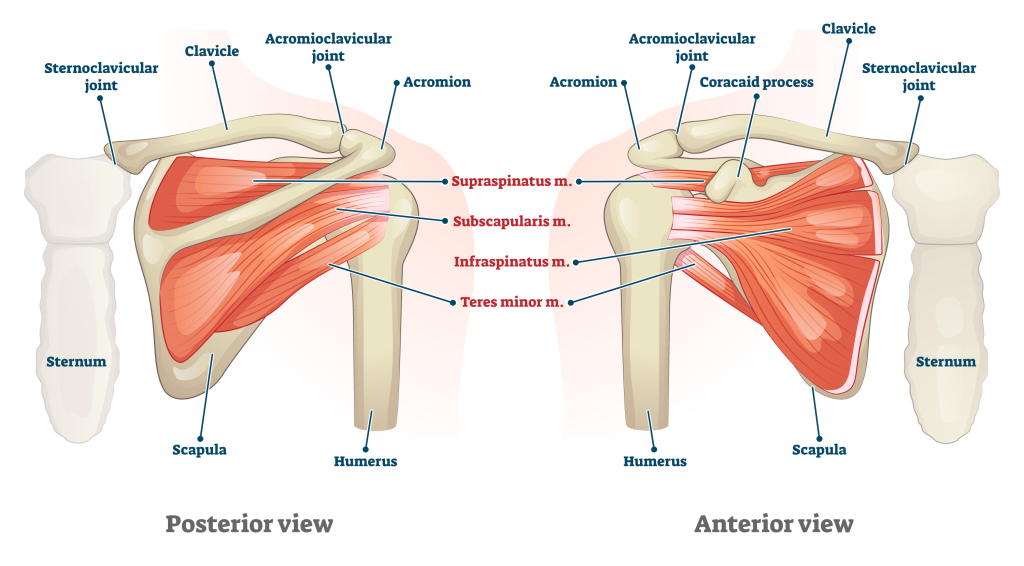
The scapulothoracic joint found at the posterior part of the shoulder is not considered a true joint and is the connection between the scapula and the back portion of the thoracic cage.
The fourth joint, the glenohumeral joint, is responsible for the wide range of motion of the shoulder. It is a ball-and-socket type of synovial joint stabilized by a group of muscles called the rotator cuff.
Eleven intrinsic muscles of the shoulder serve to connect the scapula and clavicle to the humerus. These muscles have different functions that all contribute to the flexibility and wide range of motion of the shoulder.
In daily life, the shoulder functions to stabilize the upper body while the hands and forearms are used for various tasks. The shoulder is also responsible for other activities of daily living such as reaching something above the head or opening and closing sliding doors.
However, more than its use in daily tasks, the movement of the shoulder joint is also very useful in a variety of sporting activities.
Compound Exercises for Shoulders
1. Front Raises
An excellent upper body compound exercise that primarily targets the anterior deltoids is the front raises. This workout also works several supporting muscles such as the lateral deltoid, biceps, trapezius, and pectoralis major muscles.
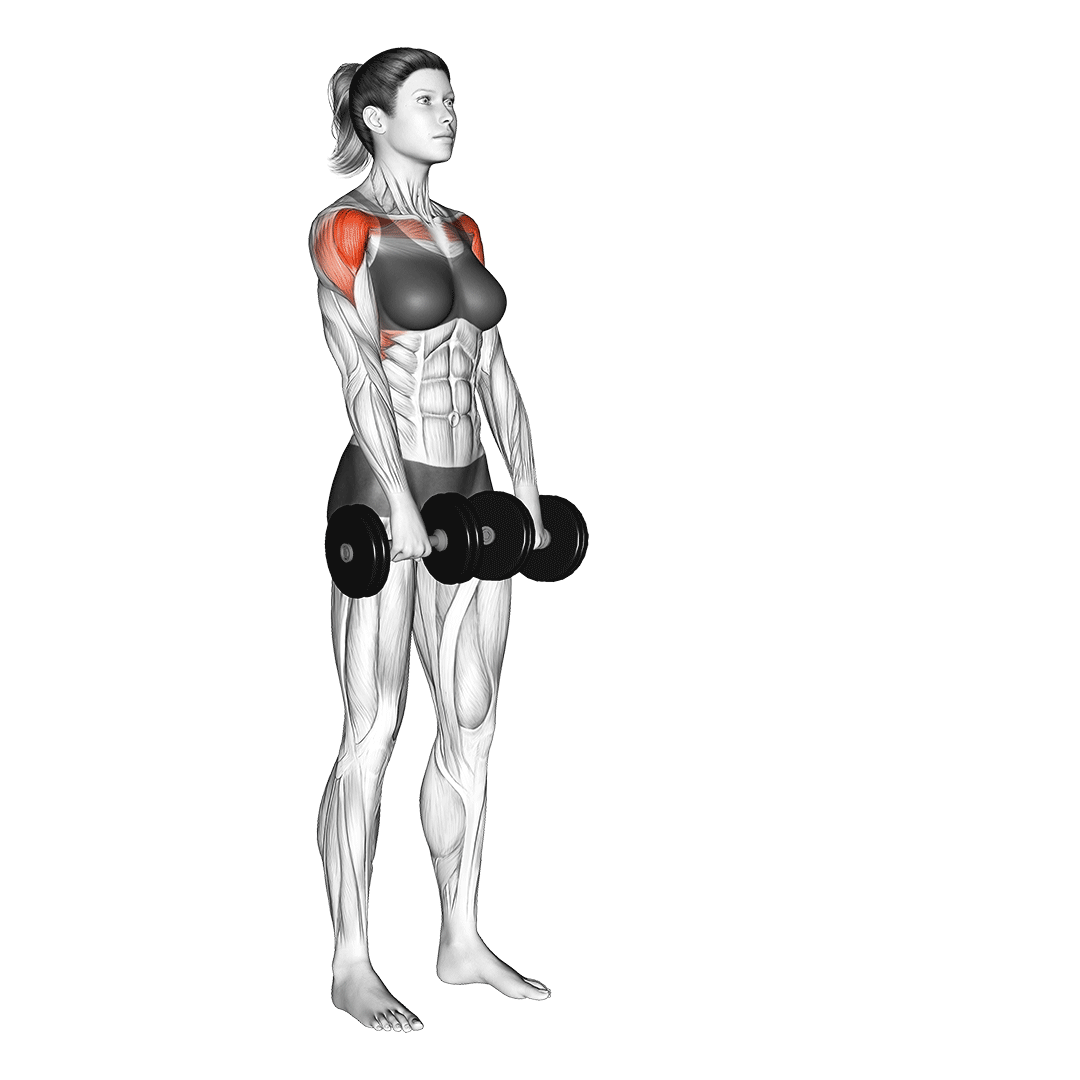
To perform this exercise, stand with the feet hip-width apart and grab a dumbbell on each hand with a neutral grip. Keep the back straight, maintaining a neutral spine and the knees locked.
The elbows should be straight throughout the movement to focus the pressure on the shoulders and other supporting muscles instead of the biceps and triceps.
To lift the weights, raise the arm forward in front of the body by flexing the shoulders until the weights reach about chin height, then lower the weights back down again.
This motion is best done one arm at a time in an alternating pattern.
Repeat the motion on the other arm to complete a single rep.
2. Bench Press
A great compound exercise for the upper body that primarily targets the triceps and pectoralis major muscles is the bench press. This exercise also engages the back, and anterior deltoids, and traps muscles.
The exercise is lying horizontally on a bench while this is being done.
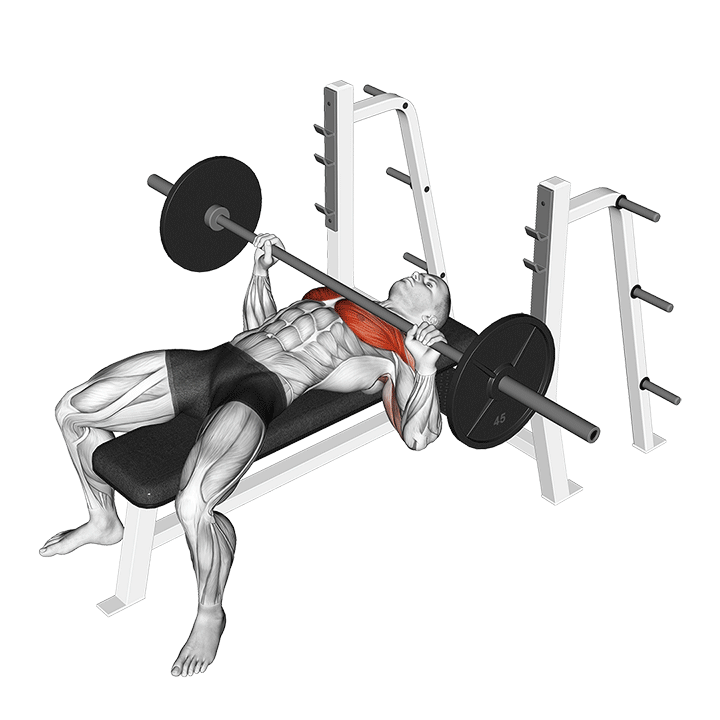
Put the head under the barbell that is on the rack while lying down on the bench to perform this exercise.
The barbell is held with a neutral grip that is just outside of shoulder width. Maintain a solid hip position and a small back arch. Un-rack the barbell by extending the arms and bringing it forward until it is above the upper chest region.
From an extended arm position, lower the barbell down by bending on the elbows until it almost hits the chest, then lock the shoulders down and squeeze the shoulder blades together. To get back to the initial position, push the bar up again.
3. Barbell Upright Row
The barbell upright row is an excellent exercise that builds strength in the shoulders and upper back region. This is a compound pull exercise, which means the weight is being pulled toward the body. It can be done in two ways that vary on the distance of the grip on the barbell.
The wider grip targets the entire shoulder while the trapezius is focused while using a narrow grip.
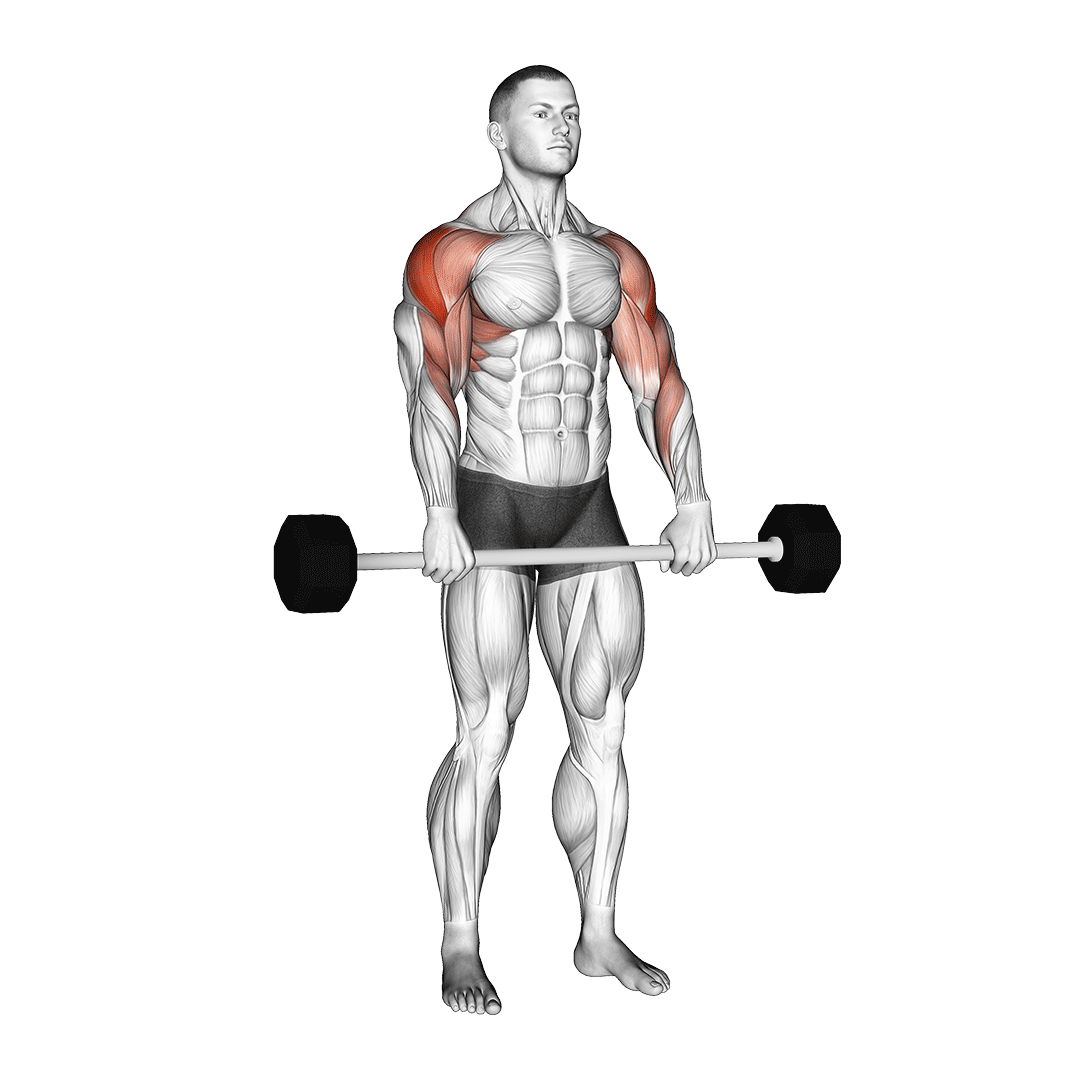
The feet should be shoulder-width apart to start the exercise with a widened overhand hold that lets the barbell hang in front of the body. Use the arms and shoulders to raise the barbell until it is almost at the chin. However, the person should refrain from trying to jump to lift weights.
One rep is completed by slowly lowering the barbell to its starting position.
4. Barbell Overhead Press
The ideal exercise for building shoulder mass is the barbell overhead press. Known for building muscles quickly, the barbell overhead press demands a lot of strength to perform.
This exercise works the pecs, deltoids, triceps, and trapezius muscles. Although the barbell overhead press can be performed in a variety of postures, sitting on a bench is the most effective since it prohibits the user from utilizing their legs as propulsion.
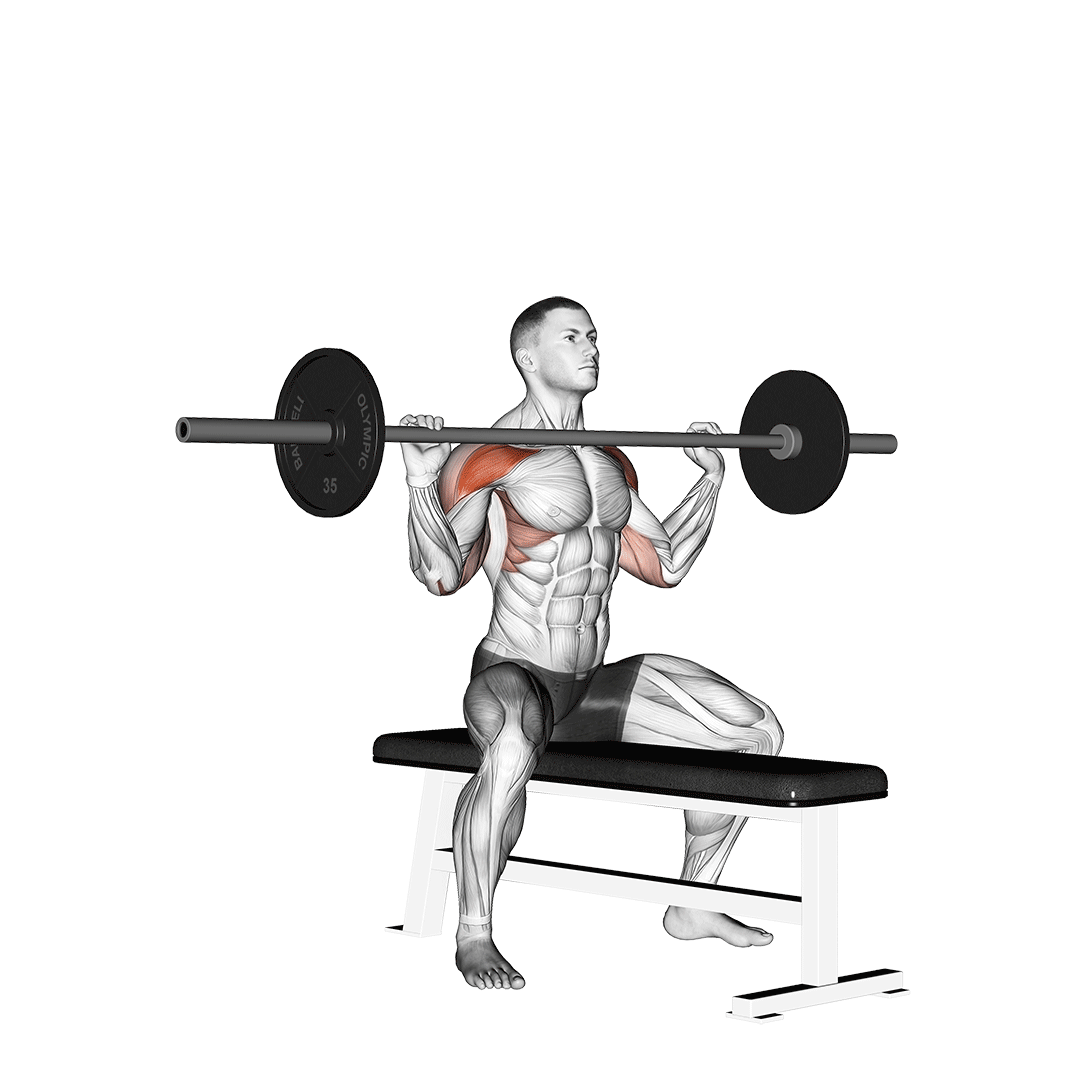
To perform this exercise the individual sits on the bench with the bench positioned between the legs of the individual.
Grasp the barbell with an overhand grip and place it in front, just on top of the chest. Press the barbell straight upward until the arms are fully extended.
Take note that the arms must not be locked to avoid injury.
5. Supported Incline Dumbbell Rows
The supported incline dumbbell rows are an excellent exercise to strengthen the shoulders and other muscles, namely the biceps, latissimus dorsi, trapezius, and rhomboids muscles.
This exercise is done with the person lying on a 45-degree inclined bench with the chest facing the backrest of the bench.

To perform this exercise, lie down on the bench with the chest on the backrest and the legs stretched straight and the feet flexed upward to get some grip from the floor.
Grab a dumbbell on each hand using a neutral grip, positioned directly below the shoulders. To lift the weights, bend the elbows until the weights reach nipple level then hold the position briefly.
Finally, slowly lower the weights in a controlled manner until it returns to the starting position. Repeat this motion for the desired number of reps to complete a single set.
Benefits of Shoulder Compound Exercises
Numerous benefits can be derived from performing compound exercises may it be for the shoulder or any other part of the body.
These benefits include the ability to train multiple muscles at once, an improvement in bone strength and density, an increase in calories burned, and an improvement in coordination, flexibility, and mobility.
1. Train Multiple Muscles at Once
In contrast to isolation exercises, shoulder compound exercises are more efficient in terms of overall muscle strengthening due to the recruitment of multiple muscle groups during their execution.
The ability to train multiple muscles at once, and strengthen these muscles at the same time, also means that it becomes easier to do progressive overload.
2. Improve Bone Strength and Density
Studies have shown that resistance training improves bone strength and density, especially in people who suffer from osteoporosis. This is due to the stimulation of osteogenic (bone formation) effects when bones experience a physical load exceeding that which is encountered during activities of daily living.
Because compound exercises allow the use of greater resistance, they also contribute to the improvement of bone strength and density.
3. Increase Calories Burned
Compound exercises lead to a greater amount of calories being burned during a single workout session.
This is because a compound exercise uses multiple muscle groups which translates to an increase in total daily energy expenditure.
4. Improve Coordination, Flexibility, and Mobility
Most compound exercises tend to mimic movements that are a part of daily life. Essentially, performing compound exercises is similar to stretching but with the use of extra weights.
This added weight or resistance applied to movements that mimic activities of daily living helps improve coordination, flexibility, and mobility.
Muscles Worked in a Typical Compound Exercise for the Shoulder
Rotator cuff
There are eleven intrinsic shoulder muscles all of which are involved in compound shoulder exercises.
One muscle group of importance is the rotator cuff which is made up of four muscles, namely the supraspinatus, infraspinatus, teres minor, and subscapularis muscles.
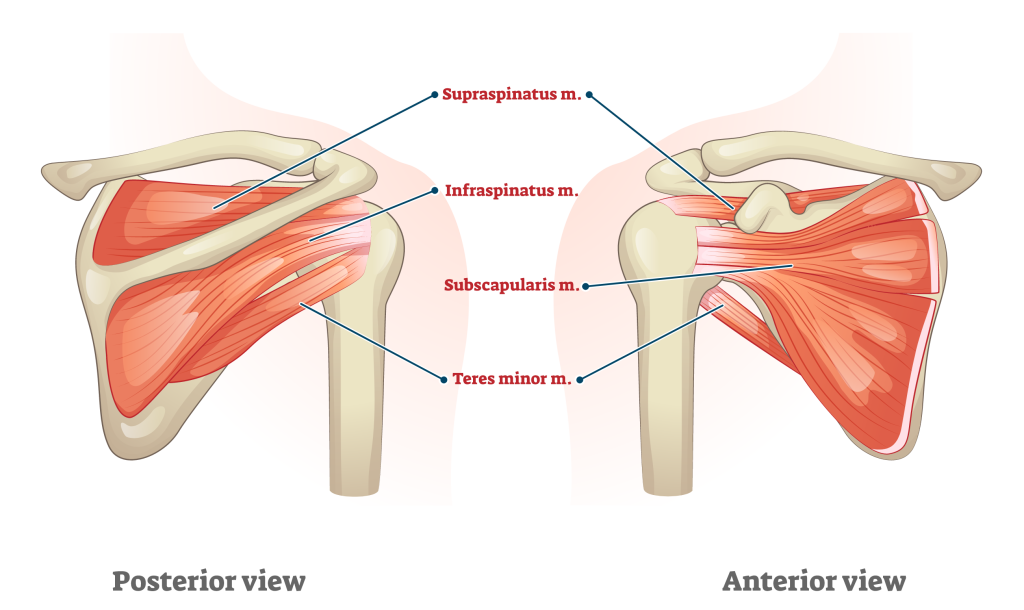
These four muscles work together to prevent the head of the humerus from sliding hence, providing stability and a full range of motion to the shoulder.
Deltoid
The deltoid muscle is divided into three parts: anterior, middle, and posterior aspects.
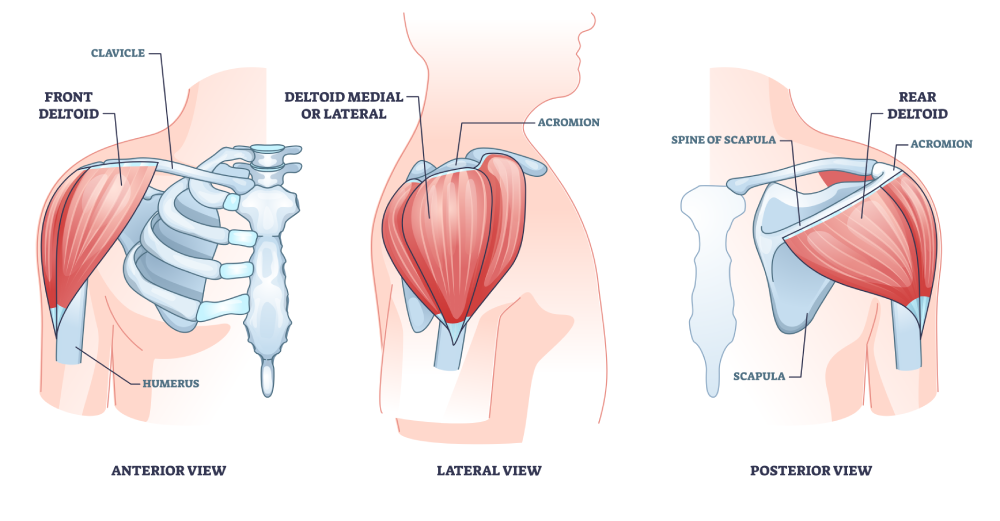
The anterior part provides flexion and medial rotation of the arm while the middle aspect abducts the arm up to 90 degrees.
For extension and lateral rotation, the posterior part of the arm is responsible.
Teres Major
The teres major is located posterior to the scapula, particularly at the inferior angle. This muscle functions to adduct and medially rotate the arm.
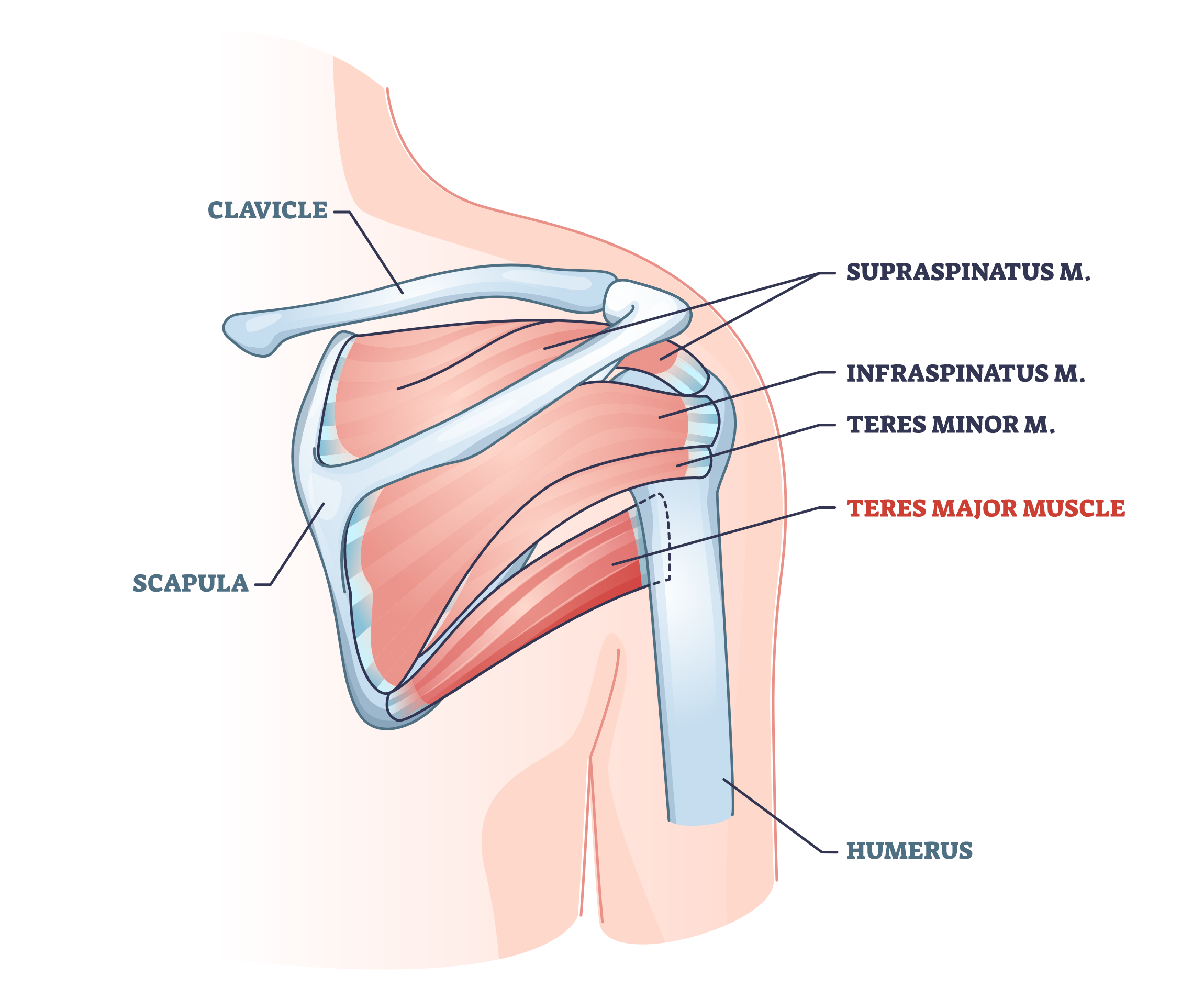
Trapezius
There are three parts to the trapezius muscle: upper, middle, and lower fibers. The upper fibers elevate the scapula while the middle fibers act to retract it.
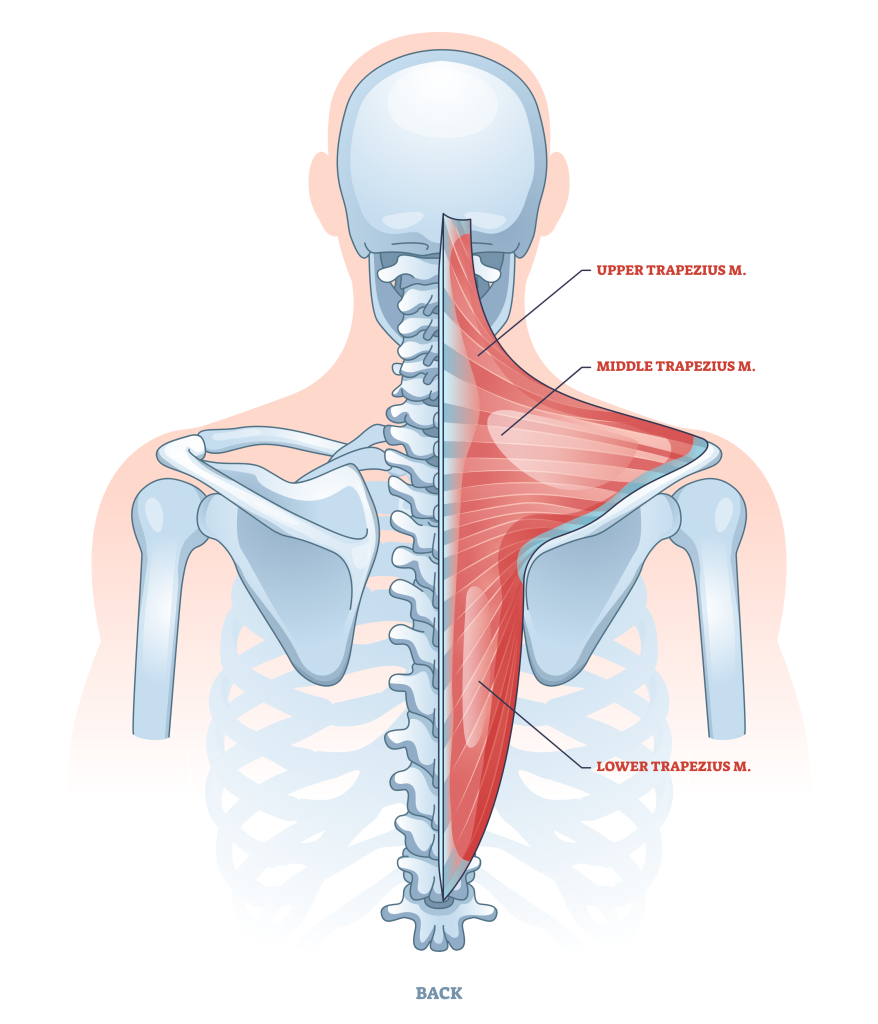
The lower fibers, however, pull the scapula inferiorly.
Together, these three parts make up a broad triangular sheet of muscle that is situated at the back and inserted at the clavicle, acromion, and spine of the scapula.
Latissimus Dorsi
The latissimus dorsi is a flat, wing-like muscle that sits at the lowest two-thirds of the trunk. It enables the extension, adduction, and medial rotation of the arm at the glenohumeral joint.
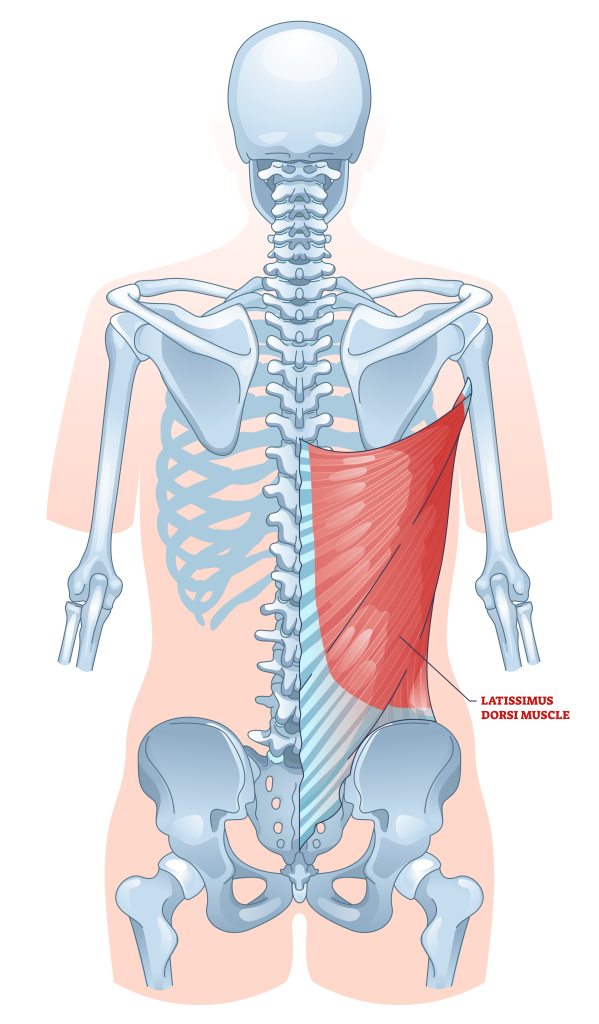
Levator Scapulae
From the name itself, the levator scapulae function to elevate the scapula. Additionally, it tilts the glenoid cavity inferiorly through the rotation of the scapula downward.
Rhomboid Major and Rhomboid Minor
The rhomboids are two muscles also found in the posterior part of the body. Both of these muscles retract and rotate the scapula.
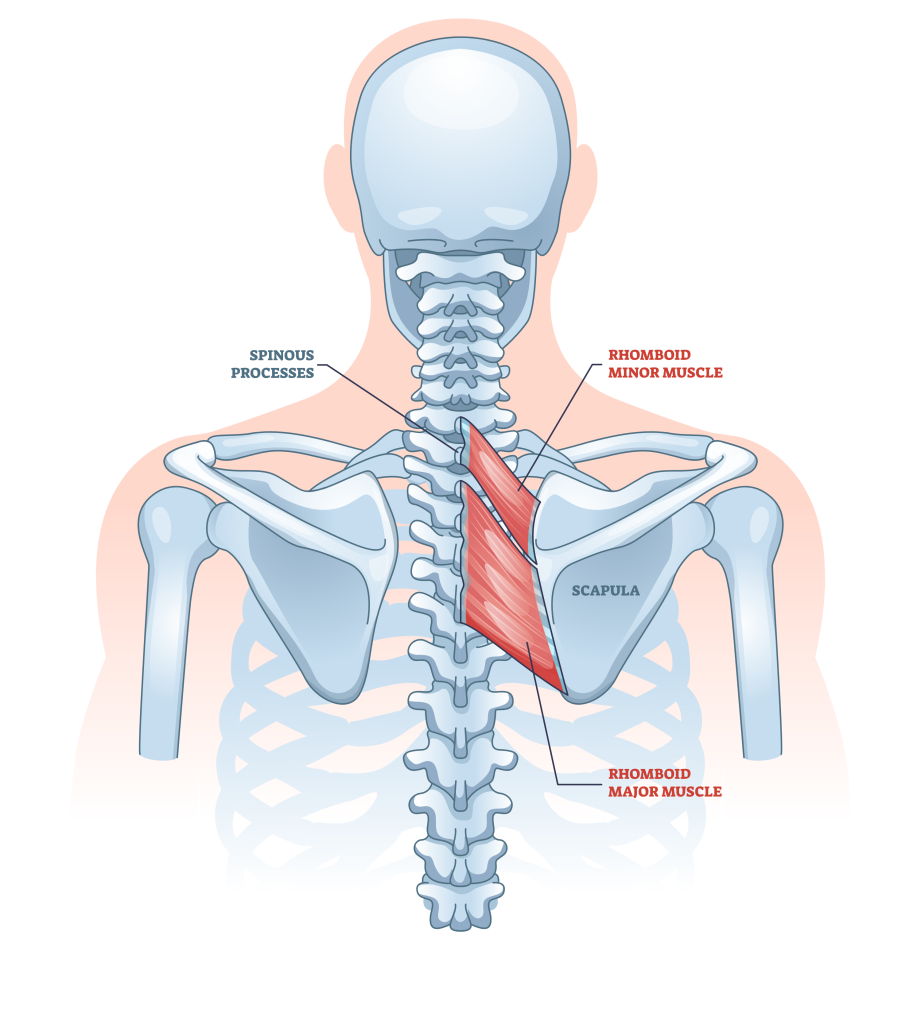
The rhomboid major inserts at the inferomedial border of the scapula while the rhomboid minor inserts at the medial scapular border.
Serratus Anterior
The serratus anterior helps in the rotation and abduction of the arm from 90 to 180 degrees. It also fixes the scapula into the thoracic wall and inserts along the anterior portion of the medial border of the scapula.
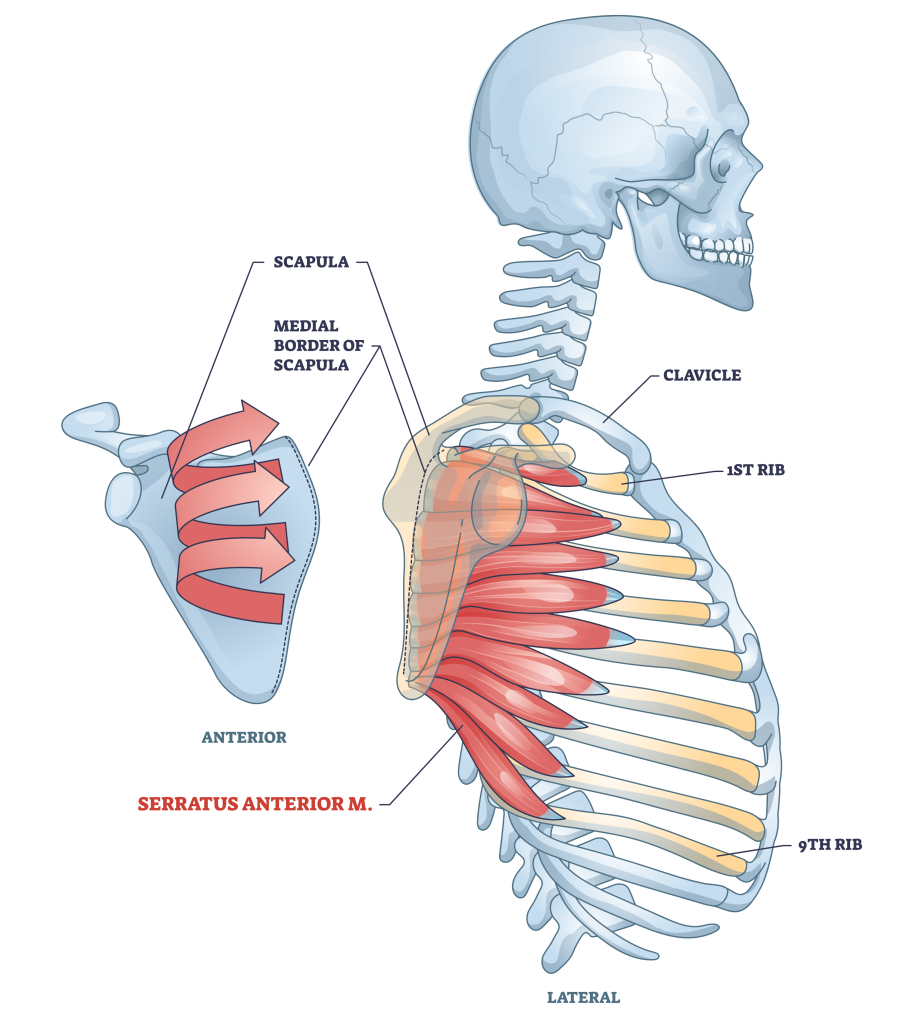
Pectoralis Major
The pectoralis major has three basic functions. Its clavicular head flexes and adducts the arm while the sternal head adducts and medially rotates the arm. Additionally, it also acts as an accessory muscle of inspiration.
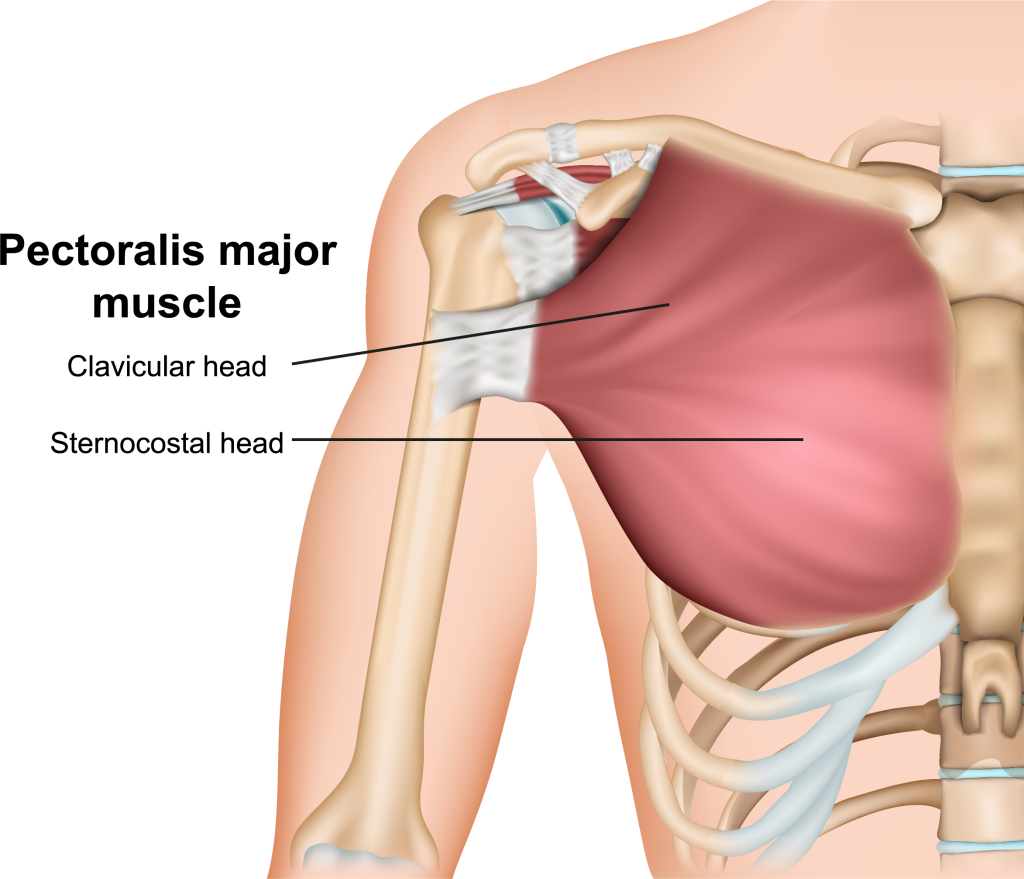
Pectoralis Minor
In contrast to the pectoralis major, the pectoralis minor does not participate in inspiration. Furthermore, it acts to depress the shoulder and protract the scapula.
Subclavius
The subclavius is a small muscle that lies under the clavicle and is often imperceptible. It does not necessarily contribute to the range of motion of the shoulder but rather depresses and stabilizes the clavicle.
Coracobrachialis
The coracobrachialis is situated in the anterior portion of the upper arm, accompanying the biceps brachii.

However, as compared to the biceps which work on the forearm, the coracobrachialis functions to flex and adduct the arm at the glenohumeral joint.
Triceps Brachii
The major extensor of the forearm is the triceps brachii muscle. Apart from its action on the forearm, it also acts on the shoulder by resisting dislocation.
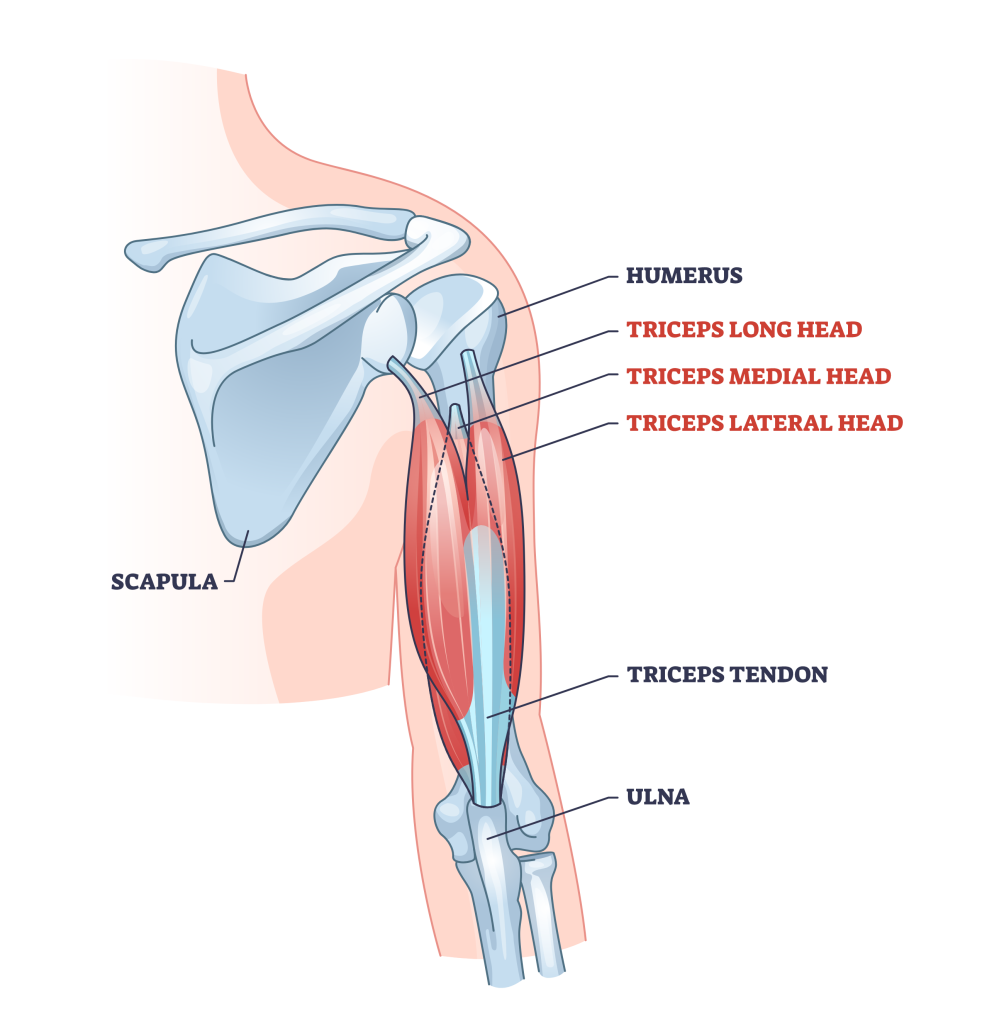
Final Thoughts
Compound exercises can burn more calories, enhance coordination, and build stronger muscles for daily activities.
These benefits make compound exercises excellent for the shoulders as a way to work the primary muscles along with other muscle groups for a more efficient workout session.
Shoulders have a variety of movements while doing day-to-day activities and are considered one of the most mobile body parts. Because of this, shoulder muscles need to be strengthened to avoid fatigue or injuries from occurring.
References
1. Miniato MA, Anand P, Varacallo M. Anatomy, Shoulder and Upper Limb, Shoulder. [Updated 2022 Jul 25]. In: StatPearls [Internet]. Treasure Island (FL): StatPearls Publishing; 2022 Jan-. Available from: https://www.ncbi.nlm.nih.gov/books/NBK536933/
2. Miura Y, Fukushima H. Function of the Shoulder Joint for Activities of Daily Living (ADL). Journal of Kansai Physical Therapy, 2008, Volume 8, Pages 25-34, Released on J-STAGE January 15, 2009, Online ISSN 1349-9572, Print ISSN 1346-9606, https://doi.org/10.11354/jkpt.8.25
3. Hong AR, Kim SW. Effects of Resistance Exercise on Bone Health. Endocrinol Metab (Seoul). 2018;33(4):435-444. doi:10.3803/EnM.2018.33.4.435
